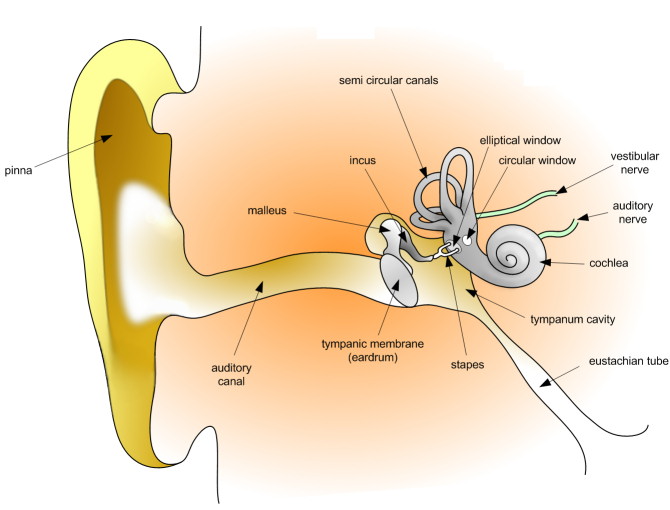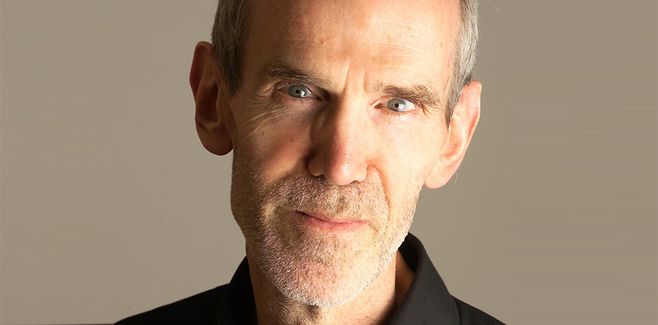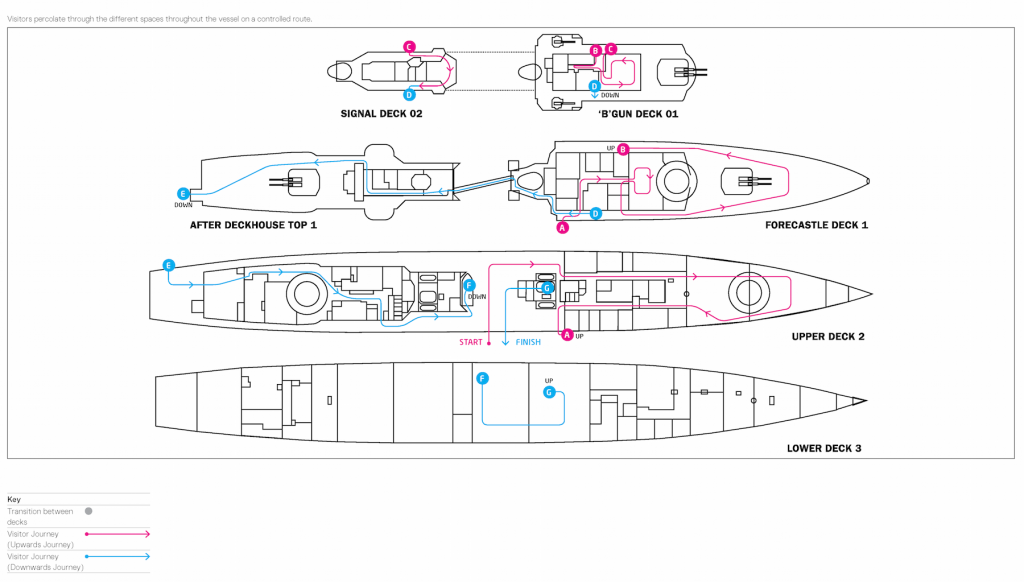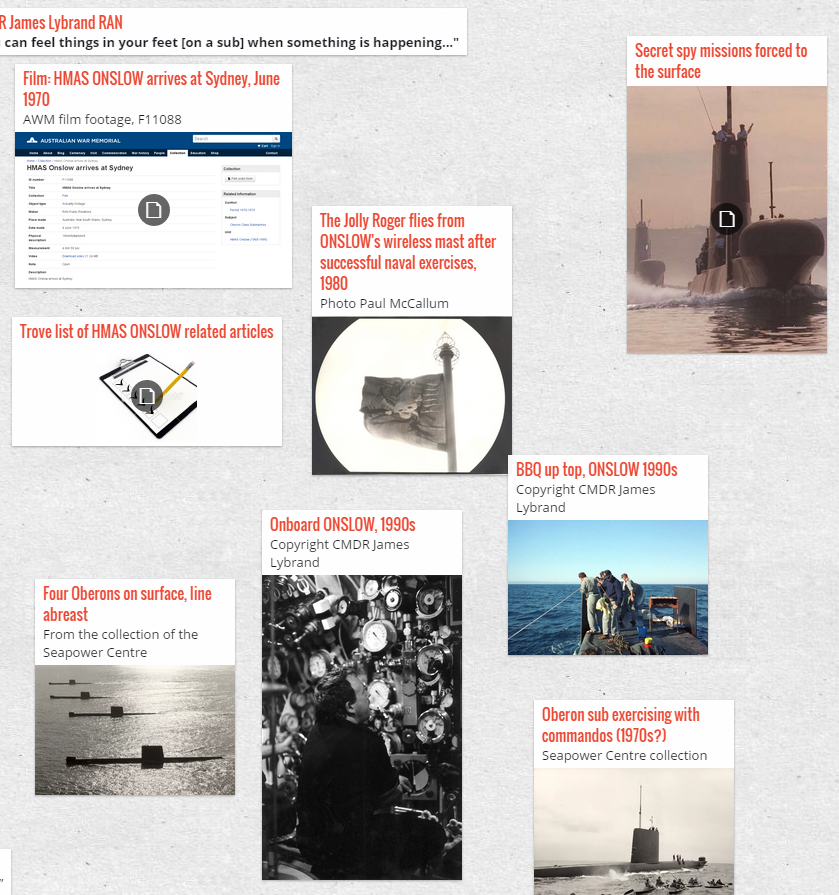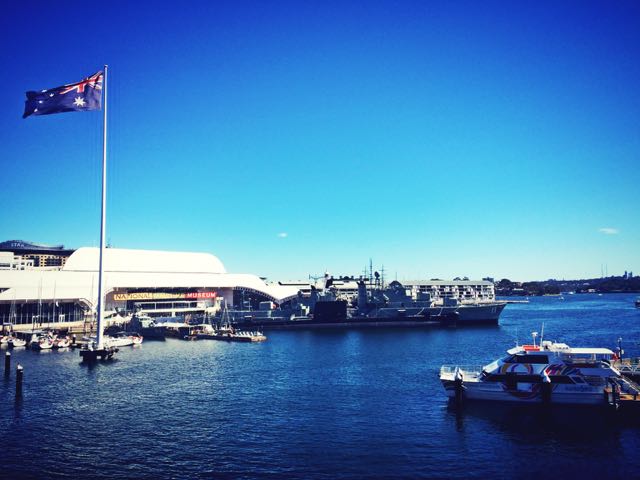The trick now is taking the many disparate ideas that Hamish and I have, and finding a way to bring them together is cohesive. For example, how to deal with a desire for industrial sound design, but also have a filmic emotional quality that pushes buttons? And how can I marry themes or motifs that can transport the listener in a traditionally filmic way, without being cheesey and encompassing a sense of musical innovation? In other words, how can I challenge the listener and always avoid being predictable, but still work in a sound and musical world that they can relate to and respond to.
The next few blog posts will deal with my various ideas. This one is about structure … and here’s my first sketch for this composition – and no, it’s not a score!
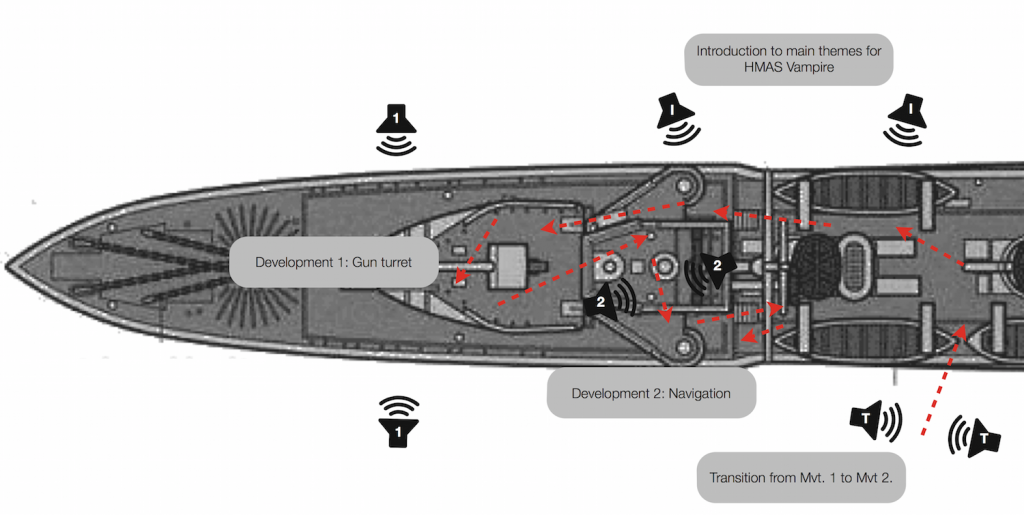
An initial sketch for how the sound might work
As mentioned, the three vessels plus new pavilion give me four distinct spaces to work in, and structurally this makes me think of a classical symphony (tho of course the classical sonata, string quartet and similar forms also have four movements). The visitor’s first experience will be in the ICE – the immersive cinema space, which will show a short engaging movie to really set the tone. I can use this space like an overture, assuming I can work with the filmmakers, to introduce themes which can then be repeated around the three vessels. It also allows me to “do” filmic music in a very straight-forward way, without it seeming cheesey, because it will be in context. And it means that the themes or motifs that are established there can reappear later, stripped-down; perhaps in the industrial sound context with a single solo instrument contrasted against mechanical sounds.
But the plan above is not about that, exactly. It’s how I’m seeing sound working across the spaces.
Often, when you travel around an exhibition you either have sound from various points in the spaces, such a booths with informations, as voiceovers or incidental sound, and perhaps if there are composed themes, musical loops. I remember one thing that grated on my nerves the second time I visited the wonderful World of Beatrix Potter was the soundtrack that was on loop. It was beautifully composed, but it was ever present, and while it hadn’t bothered me the first time I visited, I immediately remembered it the second time, and began to notice every time the loop began over, as it played again and again.
So my idea for the vessels, as you can see sketched in the above image, is that I compose not a single soundtrack on a loop, or individual sounds for spaces, but that walking physically through the spaces will determine the visitor’s musical experience. There will be a planned route, but that will not determine the pace that a visitor walks at, and of course many will wander off the path.
To do this, each space will have a musical function. I will compose 20 minutes of music for that space which will indeed be on a loop (I’m betting that no-one will spend 20 minutes in a single room), but the music in that space won’t be the same as the next space, so you won’t ever hear the same music twice. Second, the kind of music can vary from space to space, allowing us to have the more “industrial sound” spaces, and the more “filmic music” spaces.
Finally – and this is the challenge – I plan to compose the music for each space to be able to bleed into the next space. This means that – looking at the above diagram – that music from Development 1 will need to harmonically and rhythmically fit with Development 2, but not necessarily with the Transition space. The thing that’s exciting about this to me is that every visitor gets their own soundtrack, and no two experiences will be quite the same…


